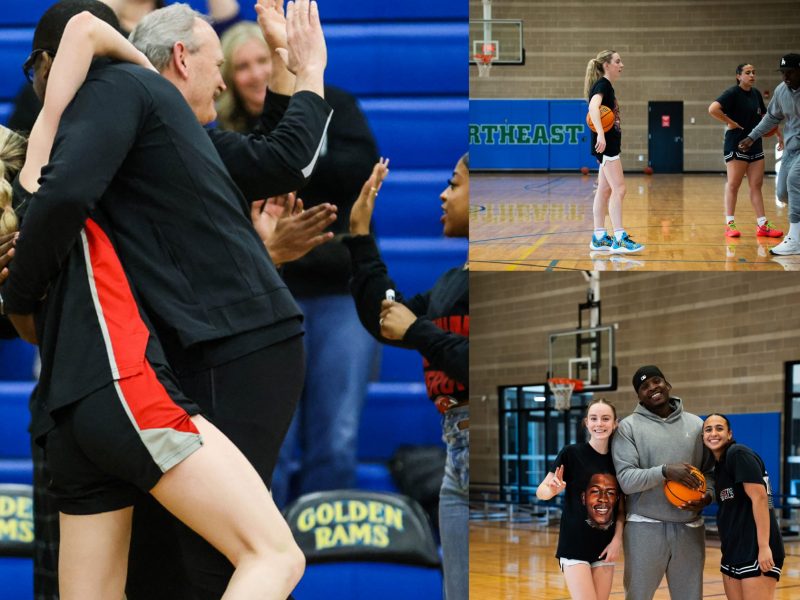Think knitting.
Did you picture your classmates sitting in a circle on a Saturday night making scarves and socks?
No, you probably thought of that stupid sweater grandma gave you when you turned 16. Believe it or not, the idea of college students knitting isn’t so far fetched. In the past few years, knitting has picked up some yarn with college students, who are putting a fresh face on an activity traditionally limited to old women.
“I think knitting has a kind of bad image,” says senior English major Emilia Costa, an avid knitter. “This is not something that is dead. This is something that is important and it has a long tradition.”
The number of women under age 45 who know how to knit or crochet doubled from 1997 to 2002, rolling from 9 percent to 18 percent, according to a Craft Yarn Council of America survey.
“It has to do with the alternate culture, the whole indie thing,” explains knitting novice Anika Fontaine, a sophomore business and French major.
Some people also find knitting’s do-it-yourself aspect alluring. Lately, knitting has become a hip trend. Not everyone’s doing it — but hey, the cool kids are.
“I like how it is really sociable,” says senior psychology major Emily Powell, secretary of the campus knitting club. “You can talk around and share ideas and patterns without being distracted.”
Not only do many knitters like multitasking while knitting, but they also find satisfaction in knowing they created each project.
“I think the stuff you make is better than the stuff you buy,” says Lilly Schwartz, a junior English major who is knitting a multicolored scarf for her boyfriend.
Patterns have strayed far from the drab Afghans of yore. While some are modeled after old Scandinavian earflap hats, others can jazz up current technology. University knitters make cell phone cozies, iPod holders and loincloths. Some also use graph paper to personalize patterns, allowing knitters to flaunt everything from skulls to snowflakes.
“I think it’s so funny to bring something so old and connect it with something up-and-coming,” Costa says of the cell phone holder she made for herself.
In the same vein, crocheter Dominique Ryan tries to keep it nongrandma. “[I] make hats and scarves in nonembarrassing colors,” the freshman art history and business major says.
But knitting has gotten a facelift in aspects other than just the cultural groups of youngsters who practice it. It also has crossed over gender barriers.
Take junior philosophy major Michael Gross, for example. He’ll do the knitting, but he’s not one to wear it on his sleeve.
“I don’t wear what I knit,” he says. “I just don’t find it as comfortable, but I enjoy making it.”
The activity is growing among young men. Gross notes some other members of his crew team are also picking up the craft.
Not the scarf-and-sweater club
In addition to its social aspect, the cyclical motions of knitting add to its destressing and relaxing nature.
“It’s really meditative,” Costa says. “It’s not really about what I’m making.”
The craft lends itself well to clubs and friendly gatherings.
“We sit around and talk. It’s really nice,” says Rachel Yamrus, a junior finance and sociology major, about the university’s knitting club’s meetings. “At most meetings there is always some new people … It’s fun, and there’s even been knitting yoga in the beginning so we can stretch out our hands.”
All skill levels are welcome.
“I really enjoy that there is a varied level of knitters in the group,” says junior criminology and criminal justice major Rebecca Hunsaker, knitting club treasurer. “I can get advice on how to start projects from the more adept in the group, but I feel like I am advanced enough that I can teach other people.”
More than a relaxing activity, knitting is seen by some young women as an outlet of feminism. What was a chore is now a liberating outlet for creativity and a recognition of the craft’s tradition.
“Women have been knitting for so long that to update it with new yarns and textures is something feminist to do,” Powell explains.
And though knitting is enjoyable once mastered, it requires patience. Schwartz remembers the exasperation she first felt.
“It would get to the point where I would have this unfixable mistake, and I would have to unravel it and start over,” she recalls. “It was so frustrating, but once I got the hang of it, I really enjoyed it.”
Sophomore anthropology major Lauren Marr demonstrates persistence can pay off. She has progressed from learning to knit scarves from cheap craft-store books to reading patterns and making a sweater for her boyfriend.
“It looks really hard,” she says, but “anyone can do it.”


